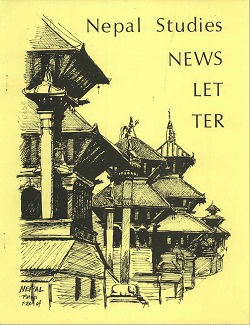Author Biography
This submission is the property of the Association for Nepal and Himalayan Studies (ANHS).
Abstract
Since 2005, Nepal has been engaged in a complex political transition that has resulted in the termination of Nepal’s 240 year old monarchy. Currently, the progress of Nepal’s political transition confronts the dual challenges of writing a constitution and mainstreaming the Maoists and their thousands of combatants, who had engaged in a decade long insurgency against the state. Growing differences between the radical Maoists and Nepal’s other political parties have repeatedly blocked Nepal’s attempt to institutionalize democracy. How does one study Nepal’s democratic transition? How does Nepal’s case relate to the wider scholarship on transition to democracy? This article critically applies the modes of transition approach to analyze Nepal’s various political transitions. The modes of transition approach with its emphasis on elite interactions during periods of transition and their enduring impact of such interactions on the regime that emerges offers a valuable analytical framework to examine series of transitions in Nepal. Many of the initial assumptions of the modes of transitions approach deriving from the experiences of Southern Europe and Latin America have recently been reexamined in the context of democratic transitions in Eastern Europe. Do Nepal’s transitions resonate with earlier patterns of third wave democratizations in Southern Europe and Latin America or do they show greater similarity with what some describe as the fourth wave of democratic transitions in post-communist Eastern Europe? This article critically applies the major premises of this approach to Nepali case assessing their validity as well as shortcomings. The central thesis underlying this paper is that the modes of transition approach, though useful in its focus on the crucial role of actors and strategies as key to understanding Nepal’s political transition, fails to account for several critical factors such as the role of external actors, the positive role of mass mobilization and leading democratic agenda of radical forces. The paper is divided into three sections. The first section lays out the theoretical framework related to the modes of transition; the second part examines Nepal’s transitions applying the key concepts of modes of transition approach; and the third section presents a critical assessment of problems and prospects of consolidation of Nepal’s current efforts to achieve a democratic system.
Acknowledgements
I would like to thank Prof. Mahendra Lawoti and anonymous reviewer for their helpful comments on the earlier draft of this paper.
Creative Commons License

This work is licensed under a Creative Commons Attribution 4.0 License.
Recommended Citation
Kantha, Pramod. 2010. Nepal's Protracted Democratization in Terms of Modes of Transition. HIMALAYA 28(1).
Available at:
https://digitalcommons.macalester.edu/himalaya/vol28/iss1/5


